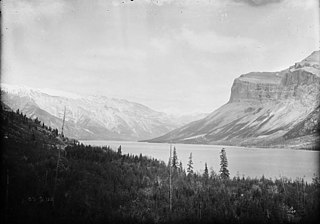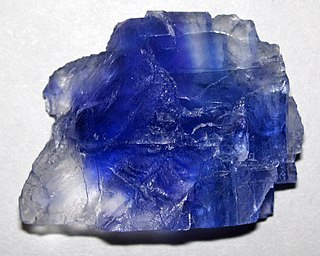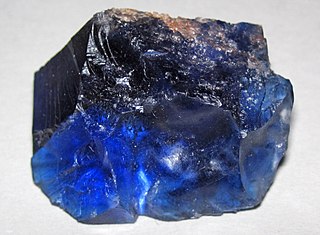
The Madison Limestone is a thick sequence of mostly carbonate rocks of Mississippian age in the Rocky Mountain and Great Plains areas of the western United States. The rocks serve as an important aquifer as well as an oil reservoir in places. The Madison and its equivalent strata extend from the Black Hills of western South Dakota to western Montana and eastern Idaho, and from the Canada–United States border to western Colorado and the Grand Canyon of Arizona.
The Muskeg Formation is a geologic formation of Middle Devonian (Givetian) age in the Western Canada Sedimentary Basin. It extends from the plains of northwestern Alberta to northeastern British Columbia, and includes important petroleum and natural gas reservoirs in the Zama lake and Rainbow Lake areas of northwestern Alberta.
The Fort St. John Group is a stratigraphic unit of Lower Cretaceous age in the Western Canada Sedimentary Basin. It takes the name from the city of Fort St. John, British Columbia and was first defined by George Mercer Dawson in 1881.
The Schooler Creek Group is a stratigraphic unit of Middle to Late Triassic age in the Western Canadian Sedimentary Basin. It is present in northeastern British Columbia. It was named for Schooler Creek, a left tributary of Williston Lake, and was first described in two oil wells northwest of Fort St. John, by F.H. McLearn in 1921. Exposures along Williston Lake serve as a type locality in outcrop.
The Mannville Group is a stratigraphical unit of Cretaceous age in the Western Canadian Sedimentary Basin.

The Palliser Formation is a stratigraphic unit of Late Devonian (Famennian) age in the Western Canada Sedimentary Basin. It is a thick sequence of limestone and dolomitic limestone that is present in the Canadian Rockies and foothills of western Alberta. Tall cliffs formed of the Palliser Formation can be seen throughout Banff and Jasper National Parks.
The Beaverhill Lake Group is a geologic unit of Middle Devonian to Late Devonian age in the Western Canada Sedimentary Basin that is present in the southwestern Northwest Territories, northeastern British Columbia and Alberta. It was named by the geological staff of Imperial Oil in 1950 for Beaverhill Lake, Alberta, based on the core from a well that they had drilled southeast of the lake, near Ryley, Alberta.

The Elk Point Group is a stratigraphic unit of Early to Middle Devonian age in the Western Canada and Williston sedimentary basins. It underlies a large area that extends from the southern boundary of the Northwest Territories in Canada to North Dakota in the United States. It has been subdivided into numerous formations, number of which host major petroleum and natural gas reservoirs.
The Winterburn Group is a stratigraphical unit of Frasnian age in the Western Canadian Sedimentary Basin.
The Three Forks Group is a stratigraphical unit of Famennian age in the Williston Basin.
The Shaunavon Formation is a stratigraphical unit of Bathonian age in the Western Canadian Sedimentary Basin.

The Ellis Group is a stratigraphical unit of Bajocian-Oxfordian age in Alberta, Saskatchewan, Montana and Wyoming in the Western Canadian Sedimentary Basin. It takes the name from Fort Ellis, Montana, and was first described in outcrop in the Rocky Creek Canyon by A.C. Peale in 1893.

The Ishbel Group is a stratigraphic unit of Permian age in the Western Canadian Sedimentary Basin. It is present in the Canadian Rockies of Alberta and British Columbia. First defined by A. McGugan in 1963, it is named for Mount Ishbel of the Sawback Range in Banff National Park, and parts of the group were first described in the vicinity of the mountain at Ranger Canyon and Johnston Canyon.
The Manitoba Group is a stratigraphical unit of middle to late Devonian age in the Western Canadian Sedimentary Basin.
The Gravelbourg Formation is a stratigraphical unit of Bajocian age in the Western Canadian Sedimentary Basin.
The Stonewall Formation is a stratigraphical unit of Late Ordovician to Early Silurian age in the Western Canadian Sedimentary Basin.
The Liard Formation is a stratigraphic unit of Middle Triassic to Late Triassic age in the Western Canadian Sedimentary Basin that is present in northeastern British Columbia. It takes its name from the Liard River, and was first described from outcrops on the southern bank of that river, near Hell Gate Rapids in the Grand Canyon of the Liard, by E.D. Kindle in 1946.
The Herald Formation is a stratigraphical unit of Late Ordovician age in the Western Canadian Sedimentary Basin.

The Cairn Formation is a geologic formation of Late Devonian (Frasnian) age in the Western Canada Sedimentary Basin. It was named for the Cairn River near its junction with the Southesk River in Jasper National Park by D.J. McLaren in 1955.

The Prairie Evaporite Formation, also known as the Prairie Formation, is a geologic formation of Middle Devonian (Givetian) age that consists primarily of halite and other evaporite minerals. It is present beneath the plains of northern and eastern Alberta, southern Saskatchewan and southwestern Manitoba in Canada, and it extends into northwestern North Dakota and northeastern Montana in the United States.






